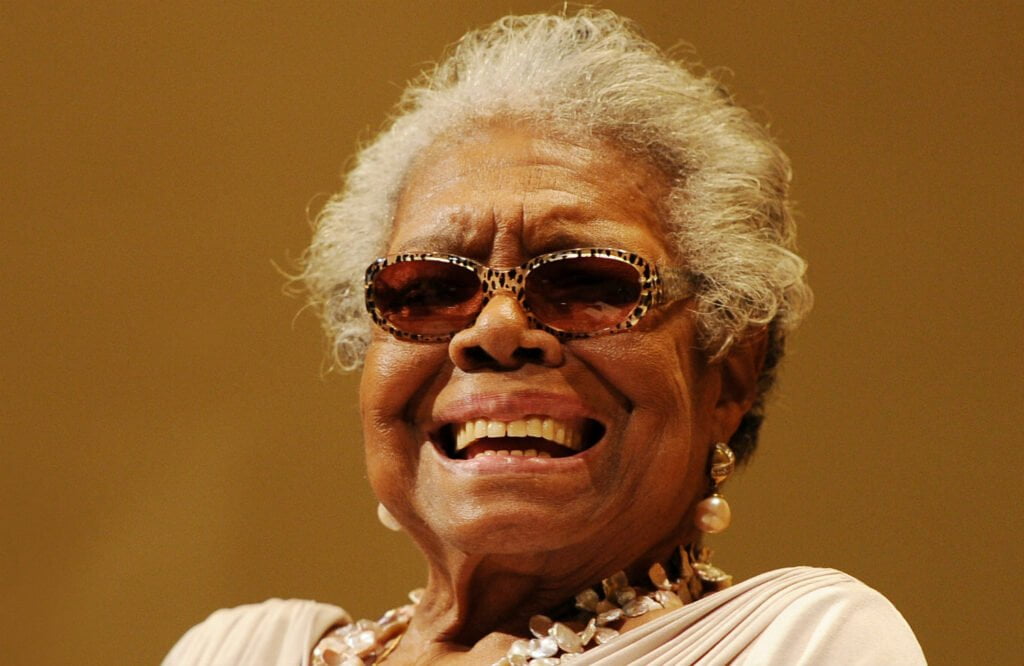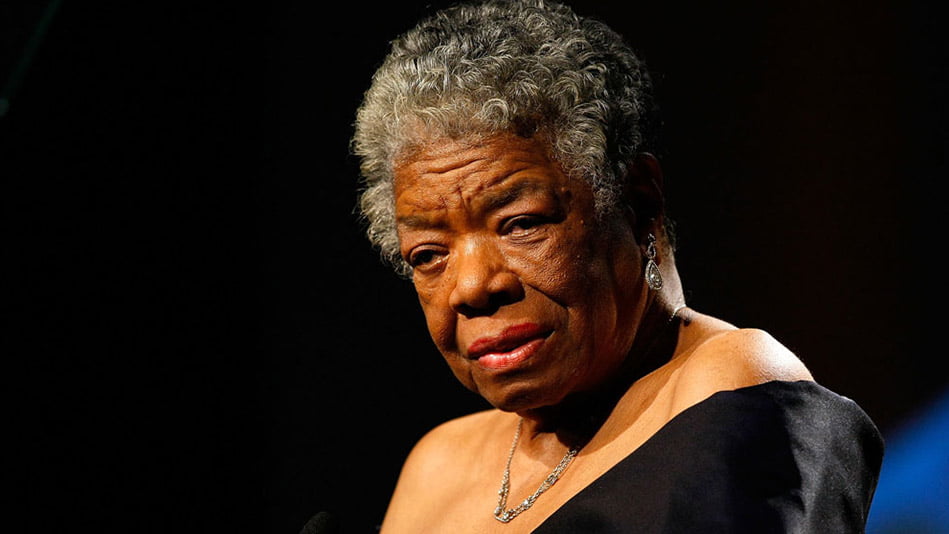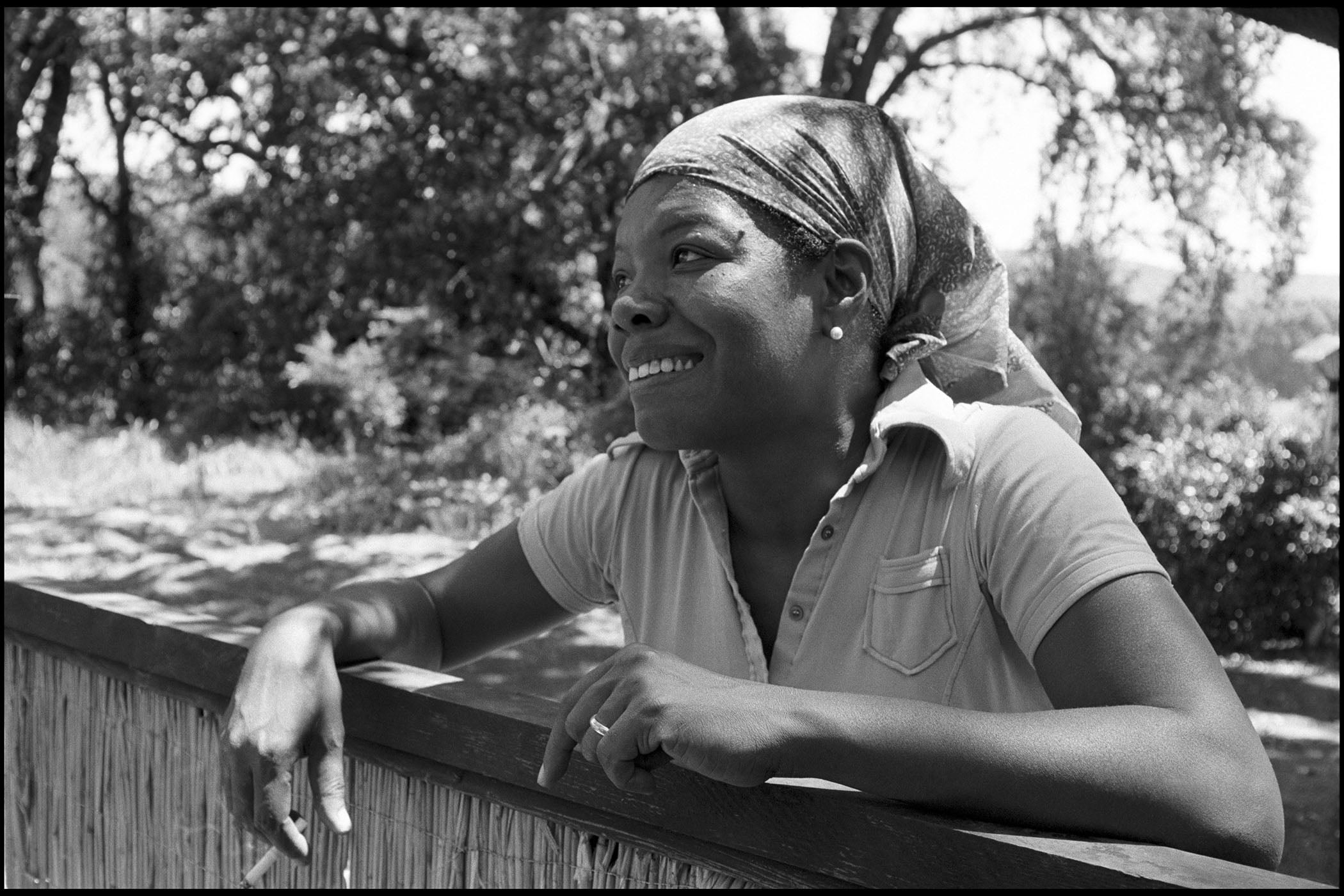Trigger warning: Mention of sexual abuse
“Leaving behind nights of terror and fear
I rise
Into a daybreak that’s wondrously clear
I rise
Bringing the gifts that my ancestors gave,
I am the dream and the hope of the slave.
I rise
I rise
I rise.“
– Excerpt from And Still I Rise by Maya Angelou (1978)
The power, the energy, the confidence, the hope that vibrates through one’s body when one reads lines like these is enough to indicate the impact Maya Angelou’s writings have had on the course of history. As one of the most celebrated and powerful voices to have emerged out of 20th-century America, there is very little left to be said about Maya Angelou, whose life, works and activism have redefined what it means to be a woman, a Black woman, grabbing “the world by the lapels”.

Maya Angelou was born in 1928 in St Louis, Missouri of America. An extensive autobiographer, she wrote six volumes of autobiographies in her life, the most famous one being her first, I Know Why the Caged Bird Sings. In it, she describes how, when she was just seven years old, she was sexually assaulted by a family member who was then killed for his crime. The subsequent trauma of this incident rendered her mute for five long years until a loving teacher of hers, Mrs Flowers helped her to finally speak again.
A prolific writer, Maya Angelou has also been to many other things in her life – singer, dancer, activist, composer, actress, director and more. With no end to her creative genius, she has broken down walls, constantly challenging norms and traditional perspectives, making her life an inspiration to many.
The journey of Maya Angelou, a multi-faceted soul
Maya Angelou was born in 1928 in St Louis, Missouri of America. An extensive autobiographer, she wrote six volumes of autobiographies in her life, the most famous one being her first, I Know Why the Caged Bird Sings. In it, she describes how, when she was just seven years old, she was sexually assaulted by a family member who was then killed for his crime. The subsequent trauma of this incident rendered her mute for five long years until a loving teacher of hers, Mrs Flowers helped her to finally speak again.
Also Read: Remembering Dorothy Pitman Hughes: The Voice Of Women’s Liberation Movement
A voracious reader from her very childhood, Angelou’s love for language only grew over the years, a love that would be found reflected later in her works over the years. Angelou’s early life was not an easy ride; fraught with struggles as a Black woman trying to carve out her own space in the world, she nonetheless persevered with a sign of intense courage, an emotion she believed to be the best of all virtues. It is her life circumstances that led her to try her hand at everything in order to earn a livelihood for herself and her son, whom she had when she was just seventeen.
She revolutionised the art of autobiography writing by playing with memory and fiction. Moreover, whether it be through her autobiographies, her collections of poetry, or her essays and other compositions, she frequently wove together themes of black freedom, her experience of living life as a black woman, fighting against social and racial injustices, and living a life wholly holding one’s own head high.
In Singin’ and Swingin’ and Gettin’ Merry like Christmas (1976), the third of her autobiographies, she writes how she “worked as a shake dancer in nightclubs, fry cook in hamburger joints, dinner cook in a Creole restaurant and once had a job in a mechanic’s shop, taking the paint off cars ” with her hands. Maya Angelou travelled widely, never residing in a place for too long and having adventurous experiences and a life full of variety. Passionate about her stage life during the early years of her career, she sang at cabarets, was part of a production of Porgy and Bess and went on to participate quite actively in the cultural artistic circles of her times.

It is through one such creative circle, the Harlem Writers Guild, that she first came across Dr Martin Luther King. So moved was she that her life as a civil rights activist began and her political career took off. Working for the Civil Rights cause she also went to places in Africa working and living there for a while. Angelou was never afraid to voice her opinions and did so with a fierceness that made people stop and listen; art was a way, whether it be acting, singing, writing or composing, through which she could channel all that she felt deeply passionate about.
The caged bird sings of freedom
Maya Angelou was extremely aware as a writer and her oeuvre of works is a testament to her knowledge of the times she lived through. She revolutionised the art of autobiography writing by playing with memory and fiction. Moreover, whether it be through her autobiographies, her collections of poetry, or her essays and other compositions, she frequently wove together themes of black freedom, her experience of living life as a black woman, fighting against social and racial injustices, and living a life fully holding one’s own head high.
Also Read: Temsula Ao: Celebrating A Legacy Of Literature And Advocacy
Her writings are not descriptions of utopic lands or experiences seen through rose-tinted glasses, she is aware of the cruelties of life but even in the face of it, she refuses to give up, a staunch believer in acts of love, hope and courage. She manages to capture the essence of being a human, a woman in all its powerful glorious imperfection. As she herself has said, “All my work, my life, everything I do is about survival, not just bare, awful, plodding survival, but survival with grace and faith. While one may encounter many defeats, one must not be defeated.” It is this strength of spirit that never waned despite the ups and downs of life that is truly remarkable and inspiring about the life of a feminist icon like Maya Angelou.

In her life, Maya Angelou won numerous awards and degrees and donned many hats, including that of a professor. She also wrote many plays, children’s books and surprisingly, even cookbooks. As stated in one of her biographies, her “screenplay Georgia, Georgia (1972) was the first original film script by a black woman to be produced and she was also the first black woman to direct a major motion picture, Down in the Delta (1998)” in Hollywood. She garnered further fame when on President Bill Clinton’s invitation, she famously read an inaugural poem titled “On the Pulse of Morning” that called, as a biographical article states, “for peace, racial and religious harmony, and social justice for people of different origins, incomes, genders, and sexual orientations”.
Angelou’s legacy, hence, over future generations to come is undeniable. Very few have been capable of having a strong impact on such a wide range of artistic and political spheres, as she has. Her works will be read and reread for years to come as people walk down the path she paved with her life’s blood, sweat and tears.
Also Read: Remembering Aretha Franklin: The Voice Of Black America
About the author(s)
Sayeri Biswas recently graduated with a bachelor’s degree in English from St. Xavier’s College, Kolkata. Whether it’s philosophically
contemplating life or gushing about the most recent book/series she has indulged in, she is always up for a deep conversation. Literature is the great love of her life, and in the future, she hopes to continue talking about all art forms as passionately as she thinks
about them.




